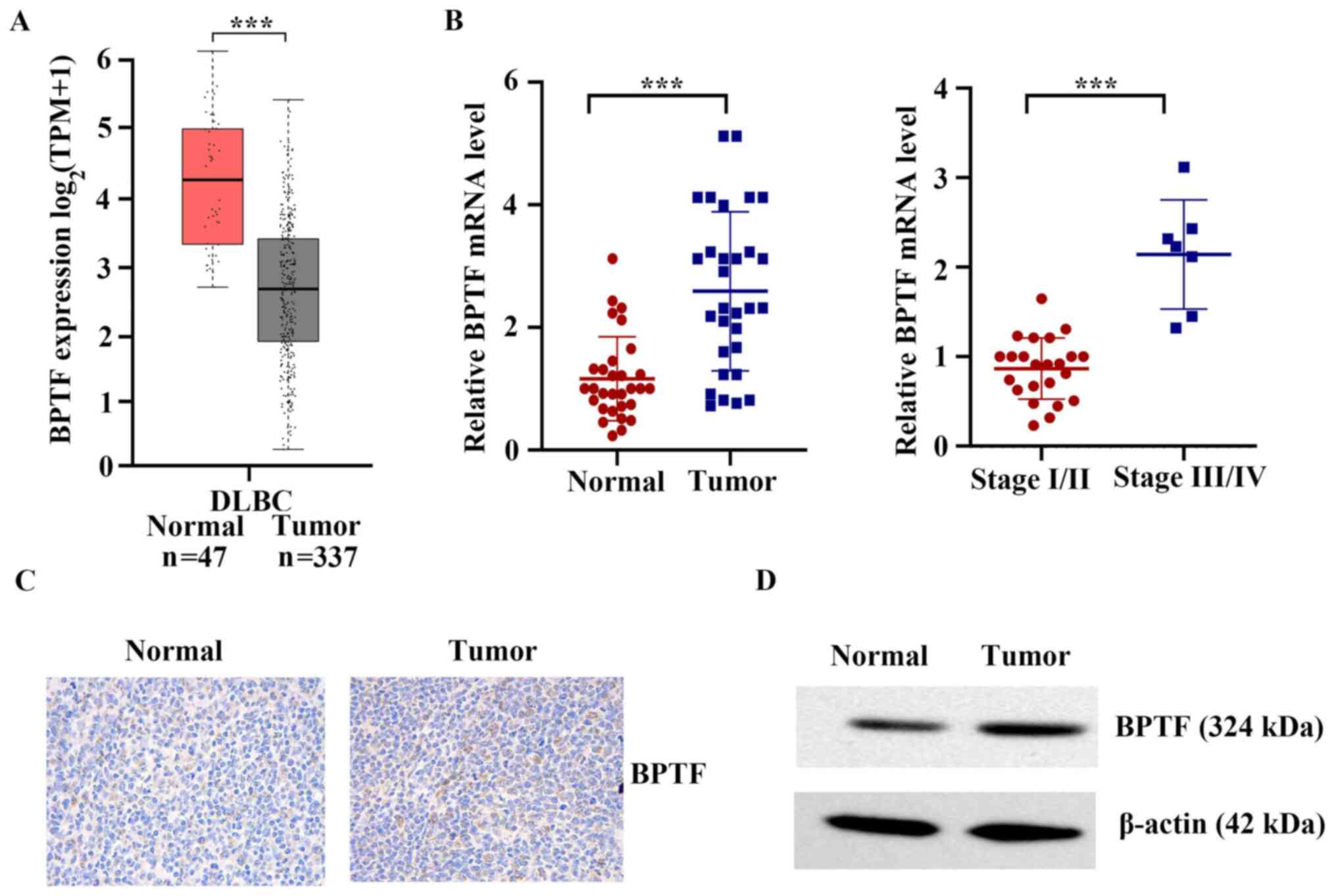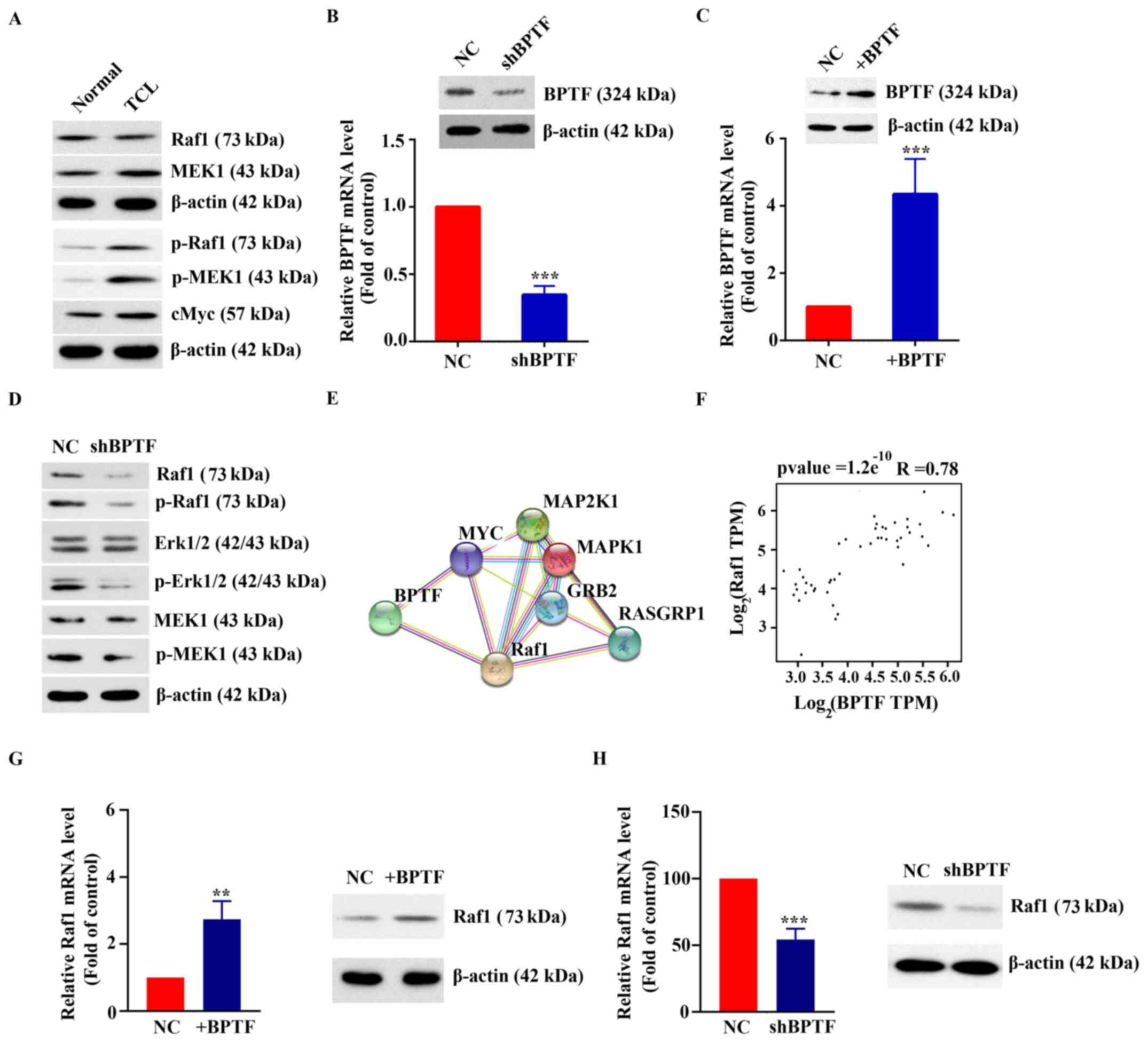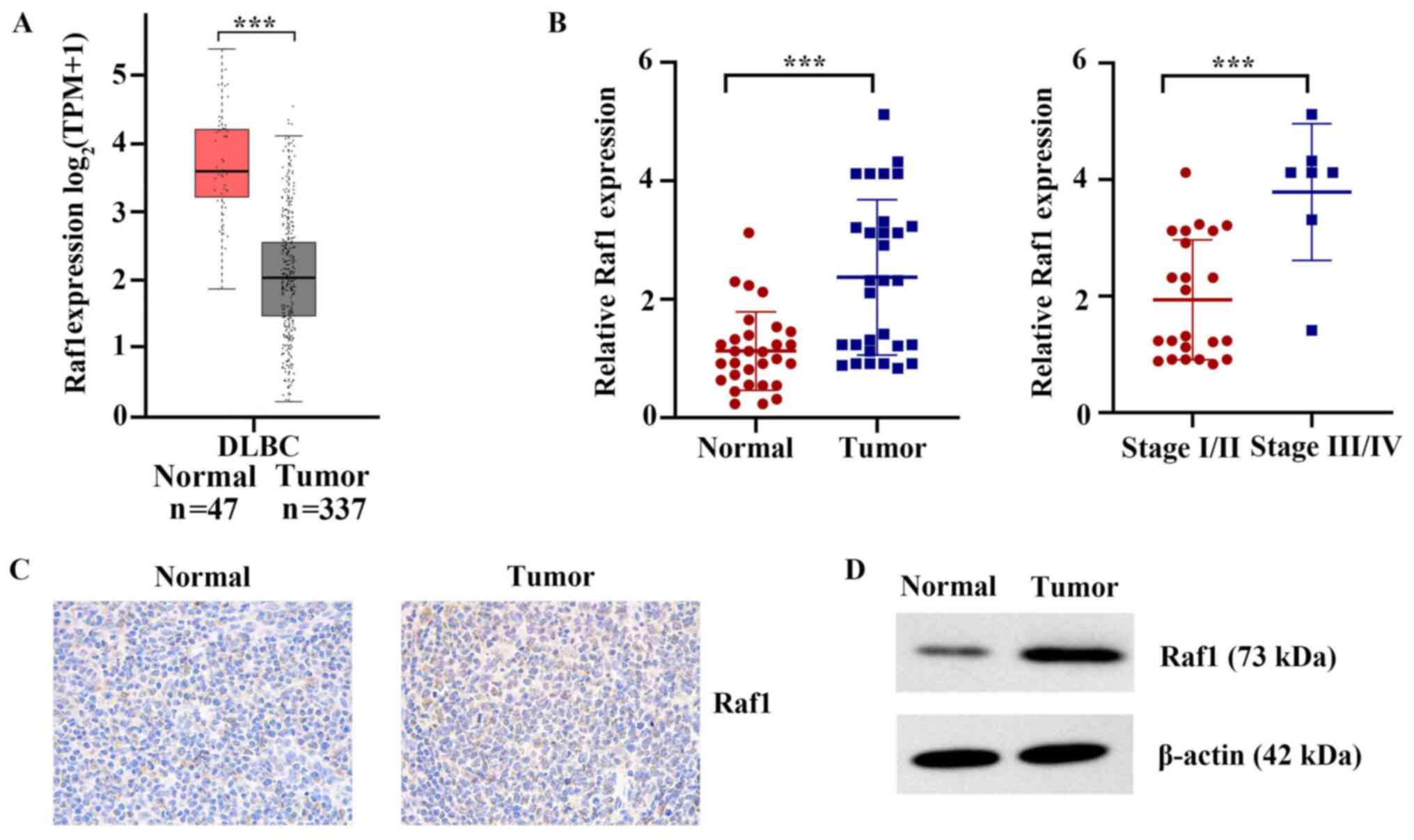|
1
|
Evens AM, Querfeld C and Rosen ST: T-cell
non-Hogdkin's lymphoma. Cancer Treat Res. 131:161–220. 2006.
View Article : Google Scholar : PubMed/NCBI
|
|
2
|
The world health organization
classification of malignant lymphomas in Japan, . Incidence of
recently recognized entities. Lymphoma study group of Japanese
pathologists. Pathol Int. 50:696–702. 2000. View Article : Google Scholar
|
|
3
|
Mugnaini EN and Ghosh N: Lymphoma. Prim
Care. 43:661–675. 2016. View Article : Google Scholar : PubMed/NCBI
|
|
4
|
Nair R and Neelapu SS: The promise of CAR
T-cell therapy in aggressive B-cell lymphoma. Best Pract Res Clin
Haematol. 31:293–298. 2018. View Article : Google Scholar
|
|
5
|
Grimm KE and O'Malley DP: Aggressive B
cell lymphomas in the 2017 revised WHO classification of tumors of
hematopoietic and lymphoid tissues. Ann Diagn Pathol. 38:6–10.
2019. View Article : Google Scholar
|
|
6
|
Alkhatib SG and Landry JW: The nucleosome
remodeling factor. FEBS Lett. 585:3197–3207. 2011. View Article : Google Scholar
|
|
7
|
Zhao X, Zheng F, Li Y, Hao J, Tang Z, Tian
C, Yang Q, Zhu T, Diao C, Zhang C, et al: BPTF promotes
hepatocellular carcinoma growth by modulating hTERT signaling and
cancer stem cell traits. Redox Biol. 20:427–441. 2019. View Article : Google Scholar
|
|
8
|
Dai M, Hu S, Liu CF, Jiang L, Yu W, Li ZL,
Guo W, Tang R, Dong CY, Wu TH and Deng WG: BPTF cooperates with p50
NF-κB to promote COX-2 expression and tumor cell growth in lung
cancer. Am J Transl Res. 11:7398–7409. 2019.PubMed/NCBI
|
|
9
|
Dar AA, Majid S, Bezrookove V, Phan B,
Ursu S, Nosrati M, De Semir D, Sagebiel RW, Miller JR III, Debs R,
et al: BPTF transduces MITF-driven prosurvival signals in melanoma
cells. Proc Natl Acad Sci USA. 113:6254–6258. 2016. View Article : Google Scholar : PubMed/NCBI
|
|
10
|
Richart L, Real FX and Sanchez-Arevalo
Lobo VJ: c-MYC partners with BPTF in human cancer. Mol Cell Oncol.
3:e11523462016. View Article : Google Scholar
|
|
11
|
Peluso I, Yarla NS, Ambra R, Pastore G and
Perry G: MAPK signalling pathway in cancers: Olive products as
cancer preventive and therapeutic agents. Semin Cancer Biol.
56:185–195. 2019. View Article : Google Scholar
|
|
12
|
Zou X and Blank M: Targeting p38 MAP
kinase signaling in cancer through post-translational
modifications. Cancer Lett. 384:19–26. 2017. View Article : Google Scholar
|
|
13
|
Rezatabar S, Karimian A, Rameshknia V,
Parsian H, Majidinia M, Kopi TA, Bishayee A, Sadeghinia A, Yousefi
M, Monirialamdari M and Yousefi B: RAS/MAPK signaling functions in
oxidative stress, DNA damage response and cancer progression. J
Cell Physiol. Feb 27–2019.(Epub ahead of print). View Article : Google Scholar
|
|
14
|
Davis JA: Mouse and rat anesthesia and
analgesia. Curr Protoc Neurosci. Jan 1–2008.(Epub ahead of print).
View Article : Google Scholar
|
|
15
|
Adams S and Pacharinsak C: Mouse
anesthesia and analgesia. Curr Protoc Mouse Biol. 5:51–63. 2015.
View Article : Google Scholar
|
|
16
|
Schmittgen TD and Livak KJ: Analyzing
real-time PCR data by the comparative C(T) method. Nat Protoc.
3:1101–1108. 2008. View Article : Google Scholar
|
|
17
|
Szklarczyk D, Gable AL, Lyon D, Junge A,
Wyder S, Huerta-Cepas J, Simonovic M, Doncheva NT, Morris JH, Bork
P, et al: STRING v11: Protein-protein association networks with
increased coverage, supporting functional discovery in genome-wide
experimental datasets. Nucleic Acids Res. 47:D607–D613. 2019.
View Article : Google Scholar : PubMed/NCBI
|
|
18
|
Jiang M, Bennani NN and Feldman AL:
Lymphoma classification update: T-cell lymphomas, Hodgkin
lymphomas, and histiocytic/dendritic cell neoplasms. Expert Rev
Hematol. 10:239–249. 2017. View Article : Google Scholar
|
|
19
|
Jaffe ES: Diagnosis and classification of
lymphoma: Impact of technical advances. Semin Hematol. 56:30–36.
2019. View Article : Google Scholar
|
|
20
|
Yu L, Li L, Medeiros LJ and Young KH:
NF-κB signaling pathway and its potential as a target for therapy
in lymphoid neoplasms. Blood Rev. 31:77–92. 2017. View Article : Google Scholar : PubMed/NCBI
|
|
21
|
Yang W, Wang Y, Yu Z, Li Z, An G, Liu W,
Lv R, Ma L, Yi S and Qiu L: SOX11 regulates the pro-apoptosis
signal pathway and predicts a favorable prognosis of mantle cell
lymphoma. Int J Hematol. 106:212–220. 2017. View Article : Google Scholar
|
|
22
|
Miller AL, Geng C, Golovko G, Sharma M,
Schwartz JR, Yan J, Sowers L, Widger WR, Fofanov Y, Vedeckis WV and
Thompson EB: Epigenetic alteration by DNA-demethylating treatment
restores apoptotic response to glucocorticoids in
dexamethasone-resistant human malignant lymphoid cells. Cancer Cell
Int. 14:352014. View Article : Google Scholar
|
|
23
|
Sun RF, Yu QQ and Young KH: Critically
dysregulated signaling pathways and clinical utility of the pathway
biomarkers in lymphoid malignancies. Chronic Dis Transl Med.
4:29–44. 2018.PubMed/NCBI
|
|
24
|
Gong YC, Liu DC, Li XP and Dai SP: BPTF
biomarker correlates with poor survival in human NSCLC. Eur Rev Med
Pharmacol Sci. 21:102–107. 2017.
|
|
25
|
Nakagawa H and Fujita M: Whole genome
sequencing analysis for cancer genomics and precision medicine.
Cancer Sci. 109:513–522. 2018. View Article : Google Scholar
|
|
26
|
Pauli C, Hopkins BD, Prandi D, Shaw R,
Fedrizzi T, Sboner A, Sailer V, Augello M, Puca L, Rosati R, et al:
Personalized in vitro and in vivo cancer models to guide precision
medicine. Cancer Discov. 7:462–477. 2017. View Article : Google Scholar : PubMed/NCBI
|














